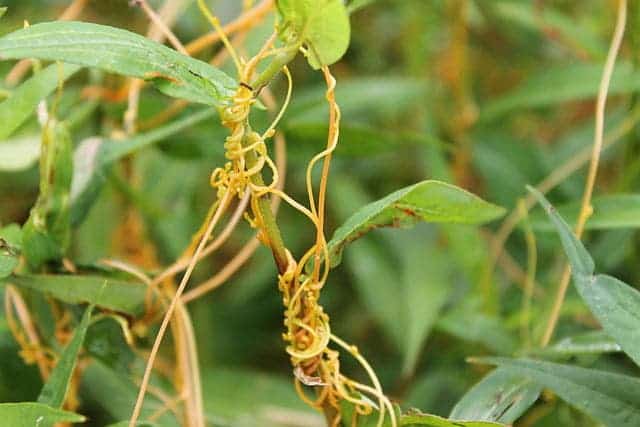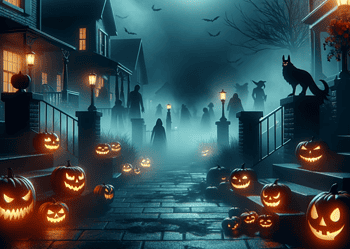
Every once in a while we get to write about some really crazy mechanisms in nature. One of these is used by a parasitic plant called the dodder, which essentially acts like a ‘vampire’ upon its unsuspecting prey. Namely, other plants some of whom are crops, so research into the dodder parasitic mechanism is of great important to food security. A new research found the dodder actually communicates using DNA with its host in order to lower its defenses. A true vampire to the end – it needs an invitation to step in.
A vampire plant

During summertime, long strands of yellow or orange string tend to form mats that seem to lie on top of other vegetation. The material most often is seen along rivers, creeks, and fields and looks like a wad of hay-string or fly-fishing line, or spaghetti. That’s not pasta, that’s the freaking dodder!
Some call the dodder (Cuscuta sp.) a vampire plant, because it sucks nutrients from its hosts, but I think alien would describe it better. Seriously, do you know how the dodder infects its hosts? It probes it! Yes, it uses a specialized root called haustoria that penetrates and invades the tissue of the host plant. Water, minerals, and carbohydrates are obtained directly from the host, so the root portion of the dodder dies and the plant separates from the soil, now being entirely dependent on the host plant. Dodder can grow as much as 7.5 cm (3 inches) per day.
Researchers at Virginia Tech closely followed how the dodder interacted with two host plants, Arabidopsis and tomatoes. Previously, studies showed that while the dodder first probes the host with its horrific ‘fangs’, RNA is being exchanged between the dodder and host. The latest findings from Virginia Tech goes to complement this picture with more details. Specifically, the team found that considerable amounts of messenger RNA (mRNA) is being exchanged between the parasite and host. Essentially, the dodder is sweat talking the host into letting it invade it.
“The discovery of this novel form of inter-organism communication shows that this is happening a lot more than any one has previously realized,” Westwood said. “Now that we have found that they are sharing all this information, the next question is, ‘What exactly are they telling each other?'”
Researchers now believe that armed with this new found knowledge they may have stumbled across key information they would allow them to develop targeted pesticides. The dodder can ravage crops like itchweed and broomrape, so there’s a commercial interest.
“The beauty of this discovery is that this mRNA could be the Achilles hill for parasites,” Westwood said. “This is all really exciting because there are so many potential implications surrounding this new information.”
Findings were published on Aug. 15 in the journal Science.






